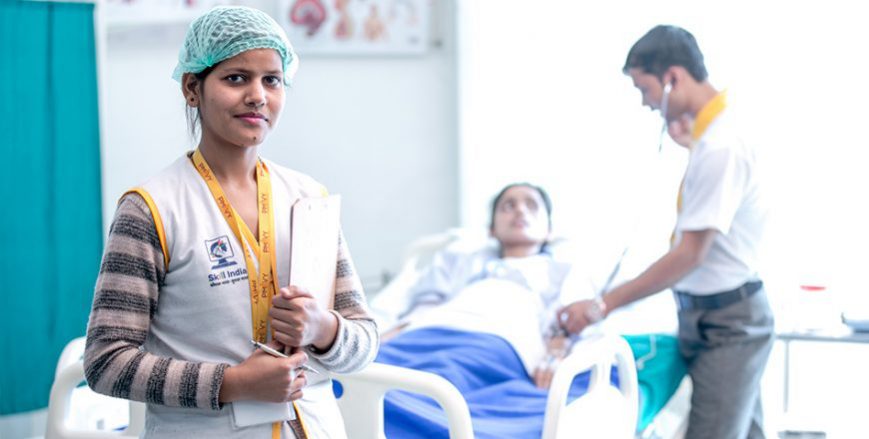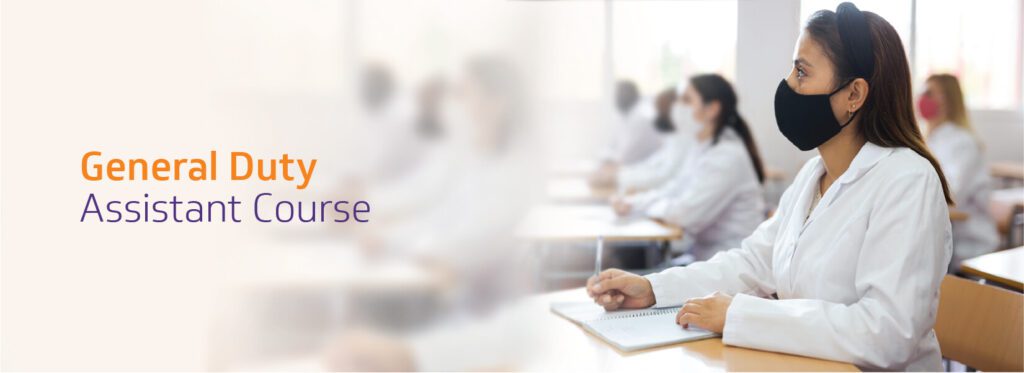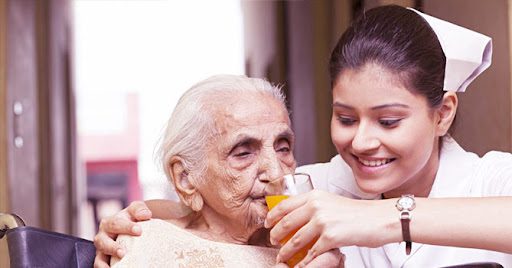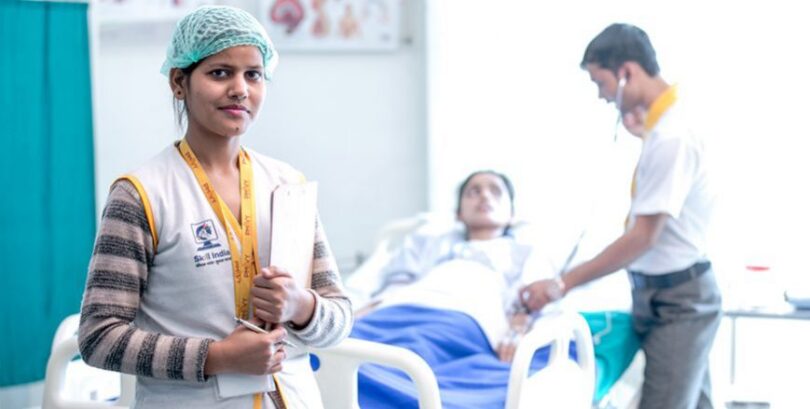Overview – General Duty Assistant Course
The CBSE (Central Board of Secondary Education) Department of Skill Education has introduced a curriculum for the Health Care sector, specifically for the job role of General Duty Assistant (GDA) for the academic session.
The curriculum for General Duty Assistant under the CBSE Skill Education program aims to provide students with a comprehensive understanding of the health care environment and the essential skills required for effective patient care. By the end of the course, students should be well-prepared to enter the workforce as competent and compassionate health care assistants.
The General Duty Assistant or GDA program is designed to provide quality care to patients admitted in nursing homes and hospitals. Upon successful completion of the General Duty Assistant course, students become qualified to take the Healthcare Sector Skills Council (HSSC) competency exam. After clearing this exam, students become certified General Duty Assistants and thus work in an efficient and knowledgeable manner.

General Duty Assistant (GDA) Course Details
General Duty Assistant Course Objective and Curriculum
The General Duty Assistant (GDA) course trains students to work as nursing aides in hospitals, nursing homes and home care scenarios. As part of the curriculum, students learn how to provide basic nursing care and manage ill patients. A GDA works in close collaboration with doctors, nurses and other healthcare providers. The nursing assistant course lays special emphasis on inculcating empathetic and ethical behavior beyond patient care. Some of the key responsibilities of the General Duty Assistant are to provide daily care, look after the patient’s comfort, safety and health needs.

COURSE OVERVIEW
Career growth – General Duty Assistant
General Duty Assistants have a plethora of career options to choose from and can progress by taking more responsibilities. Certified students start their careers as General Duty Assistants after which they can take up the profession of Nursing Assistants. After gaining some experience as Nursing Assistants, they can take up the job role of Supervisors, Floor Supervisors, and finally Managers, which are deemed as more independent job roles.
The General Duty Assistant (GDA) course curriculum covers the following topics:
- • Basic human anatomy & physiology
- • Understanding hospitals & the healthcare system
- • Caring for the visually impaired
- • Basic nursing skills
- • Disposal of medical waste
- • Understanding body mechanics
- • Fall prevention care and restraints
- • General health & hygiene
- • Special skin care for radiotherapy and pressure sores
- • Role of a patient care assistant
- • Administering drugs as per prescriptions
- • Daily care of a patient
- • Patient handling, lifting, and transferring
- • Emergency first aid and CPR

JOB/WORK LOCATION
- • Hospitals
- • Old age homes
- • Patient’s homes
- • Community care centre’s
CURRICULUM FOR General Duty Assistant
Health Care (Subject Code 813)
Job Role: General Duty Assistant
Class XII
Health Care (Subject Code 813)
Job Role: General Duty Assistant
Class XI

General Duty Assistant (Job Role)
Qualification Pack: Ref. Id. HSS/Q5101
Sector : Health Care
CBSE Textbook for Class XI General Duty Assistant
General Duty Assistant (Job Role)
Qualification Pack: Ref. Id. HSS/Q5101
Sector : Health Care
CBSE Textbook for Class XII General Duty Assistant
Suggested Equipment and Materials
To facilitate effective training and practical experience, the following equipment and materials are recommended for the Health Care/Medical room:
- Sphygmomanometer: For measuring blood pressure.
- Thermometer: For checking body temperature.
- Wall Mounted Stadiometer: For measuring patients’ height.
- Pulse Oximeter: For measuring oxygen saturation levels.
- Basic First Aid Kit: For emergency situations.
- Patient Examination Table: For conducting patient assessments.
- Medical Charts and Forms: For recording patient information.
Practical Training
The course will include hands-on training sessions where students will practice the following:
- Taking and recording vital signs.
- Assisting with patient mobility and daily living activities.
- Using medical equipment and tools safely and effectively.
- Communicating with patients and health care professionals.
- Handling medical records and administrative tasks.
Assessment and Evaluation
Students will be assessed through a combination of:
- Written Examinations: To evaluate theoretical knowledge.
- Practical Exams: To assess hands-on skills in clinical tasks.
- Project Work: To encourage research and application of knowledge in real-world scenarios.
- Continuous Assessment: Based on participation, practical demonstrations, and overall performance throughout the course.
For more detailed information, including specific learning outcomes, assessment criteria, and resources, students and educators should refer to the official CBSE guidelines







